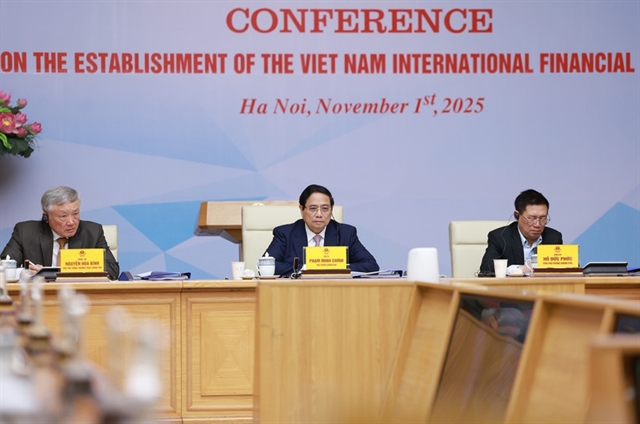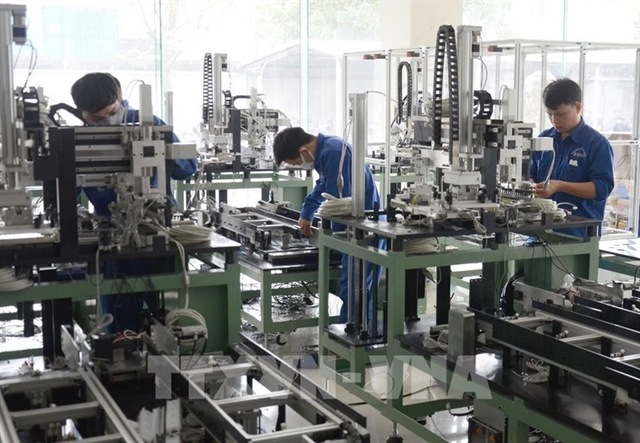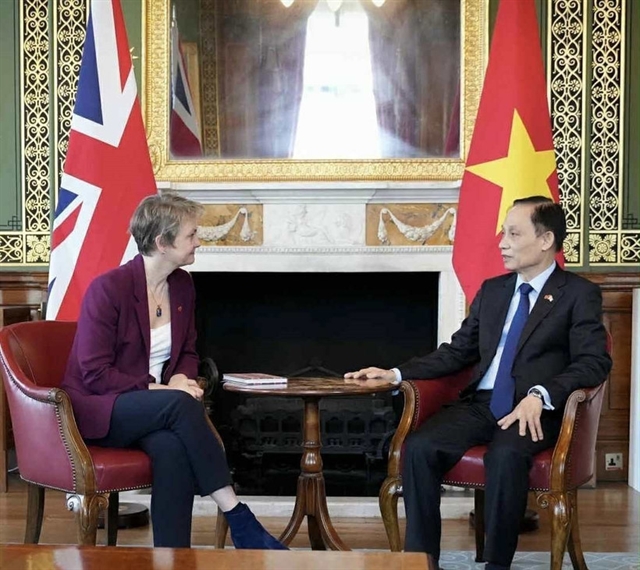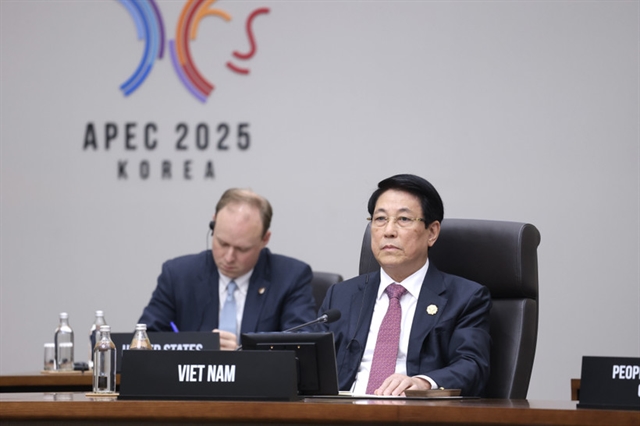

A farmer who lives on the edge of Hà Nội absolutely loves the late President Hồ Chí Minh. So much that he has an exhibition of ‘Uncle Hồ’ in his home.

|
| Trần Văn Cao, 85, a farmer with his love and respect to President Hồ Chí Minh has spent about 50 years of life collecting photos and documents about life and career of the President. VNA/VNS Photo Đinh Thuận |
By Đinh Thuận
HÀ NỘI The small house in the small village looks like any other on the outskirts of Hà Nội, but what's inside is astounding.
Owned by Trần Văn Cao, an old farmer in Đại Phẩm Village of the capital's Chương Mỹ District, about 20km from the city centre, the house is locally known as a museum with hundreds of photos and items about President Hồ Chí Minh.
The farmer made one room into an exhibition centre called 'Uncle Hồ's memorial hall' after spending 30 years researching and collecting more than 300 photos and stories about President Hồ’s life and career.
Cao, 85, a rustic man with boundless affection for the late President was thrilled to discuss his collection.
“They are really unforgettable memories. Wherever I go and whatever I do, I always try to focus on looking for documents and photos of Uncle Hồ. I also tried to learn about his life and career through books, newspapers and TV programmes. This helps me trace the materials for my collection,” Cao said.
Before working in water irrigation, Cao was a farmer so after retiring, he still worked hard in the fields to support his family.
“Although life was sometimes really hard for me and my family, whenever I thought of Uncle Hồ and the Party, I had a special respect for him,” Cao said.
The collector added that was why he decided to collect the photos and documents about the President to express his love towards him.
Hà Nội is home to many revolutionary and historical relics called “red addresses” where President Hồ Chí Minh once stayed, lived or worked, such as those inside the Presidential Palace; at 48 Hàng Ngang Street in Hoàn Kiếm District where the President wrote the Declaration of Independence; Uncle Hồ's memorial house in Vạn Phúc Village, Hà Đông District where he launched an appeal for national resistance against the French and the K9 area in Ba Vì District where he and other Vietnamese Party and State leaders worked during the war.
President Hồ’s memorial hall in Cao’s house always impresses visitors as the owner is enthusiastic to introduce the items in the room with all of his love towards the national hero.
Sometimes he even cries when telling stories about when President Hồ was imprisoned in China by the Chiang Kai-shek government or when he sat in a tent commanding the fight against the French colonialists.
Always wearing a white shirt and a plain brown hat, Cao dresses simply, just like his idol did.
In the exhibition room which is also decorated with very simple furniture such as an old table and a shelf for placing a small old TV set, Cao's photo display is particularly striking.
The highlight of the room is a large photo of President Hồ in the middle of the front wall and others which have been framed and hung around the room.
There are some paintings of historical relics such as Nhà Rồng Pier in HCM City, President Hồ Chí Minh's Mausoleum and his stilt house in the Presidential Palace in Hà Nội that Cao said he had drawn himself.
Talking about some pictures hanging in the house, the collector revealed they were left by his grandparents who also collected photos of the President.
“I found such photos were hung in the most respectful ways in our grandparents’ home since I was very young. Many dozens of years have passed but such images followed our family till now and we consider them the most precious souvenirs of our forefathers,” Cao said.
Like many other farmers in the villages, Cao said he had to work hard all of his life to earn a living and support his family with four children.
In 2003, Cao was able to build a new house with three floors.
The house is his pride and joy and that pride has only grown since he preserved the top floor for his museum.
Cao said he got total support from everyone in the family when he got the idea to build the memorial room.
“It is because they understand that I always had respectful and sacred feelings towards Uncle Hồ,” he said.
Cao said he built the memorial room and also wrote a historical song about the Party, President Hồ, and the revolution to please the people in his countryside area.
Many people find it hard to believe a farmer like him whose hands were always covered with mud had spent time collecting such a great amount of pictures about President Hồ.
Along with the photo collection, Cao composed a historical epic of 1,456 verses and compiled nearly 100 pages of writings about President Hồ, the revolution and resistance wars
From the beginning of 2020, when the memorial hall was completed and opened to the public, Cao's house became a gathering place for visitors and locals to come admire the collection.
All the photos are exhibited featuring different times and milestones of President Hồ’s life and career from the first day he left the country to find a way to save the nation until the last moments of his life.
The house is often crowded with villagers and members of social organisations and has become the pride of both Đại Phẩm Village and Đại Yên Commune, according to villagers.
Nguyễn Văn Đắc, a retired teacher in the neighbouring village of Đường in Đại Yên Commune, expressed his admiration for Cao’s knowledge about the President while visiting the room and listening to him speak.
“Like everyone in my village, I respect the affection and gratitude of the collector for Uncle Hồ,” said Đắc.
Đại Yên Commune’s Party Committee Secretary Đặng Tiến Hoàng said the memorial hall in Cao’s house was a meaningful model of traditional education.
“The room has helped promote a local campaign to study and follow the ideology, morality and lifestyle of Hồ Chí Minh,” Hoàng said.
The official said since Cao opened the room to visitors, Đại Yên communal authority had organised field trips for officials, Party members and social organisations in the commune to visit the room to improve their knowledge about the national hero and the Vietnamese revolution. VNS
GLOSSARY
The small house in the small village looks like any other on the outskirts of Hà Nội, but what's inside is astounding.
The outskirts of a city means the edge of a city.
Astounding means “surprisingly impressive”.
Cao, 85, a rustic man with boundless affection for the late President was thrilled to discuss his collection.
Rustic means “to do with the country, farm and bush areas”.
If you have boundless affection for someone, you love them so much there is no limit to the feeling.
To be thrilled means to be very pleased.
This helps me trace the materials for my collection,” Cao said.
Trace means “track down”.
Before working in water irrigation, Cao was a farmer so after retiring, he still worked hard in the fields to support his family.
Irrigation happens when water is sprayed on fields.
When someone retires, they stop working because of their age.
Hà Nội is home to many revolutionary and historical relics called “red addresses” where President Hồ Chí Minh once stayed, lived or worked, such as those inside the Presidential Palace; at 48 Hàng Ngang Street in Hoàn Kiếm District where the President wrote the Declaration of Independence; Uncle Hồ's memorial house in Vạn Phúc Village, Hà Đông District where he launched an appeal for national resistance against the French and the K9 area in Ba Vì District where he and other Vietnamese Party and State leaders worked during the war.
Relics are things left over from the past.
When you launch something, you start doing it.
An appeal is a request, which means to ask people for something.
Resistance means standing up against a force that you do not like, or do not agree with.
President Hồ’s memorial hall in Cao’s house always impresses visitors as the owner is enthusiastic to introduce the items in the room with all of his love towards the national hero.
If visitors are impressed with something, they think it is wonderful.
To be enthusiastic means to be excited about doing something.
Sometimes he even cries when telling stories about when President Hồ was imprisoned in China by the Chiang Kai-shek government or when he sat in a tent commanding the fight against the French colonialists.
Colonialists are people who come from one country to rule another country to make their original home country wealthy.
Always wearing a white shirt and a plain brown hat, Cao dresses simply, just like his idol did.
An idol, in this case, means a hero.
Talking about some pictures hanging in the house, the collector revealed they were left by his grandparents who also collected photos of the President.
To reveal something means to give out some information that has not yet been made public.
“Many dozens of years have passed but such images followed our family till now and we consider them the most precious souvenirs of our forefathers,” Cao said.
Souvenirs are things, such as gifts, that remind you of a time and place.
Your forefathers are your ancestors.
The house is his pride and joy and that pride has only grown since he preserved the top floor for his museum.
To preserve something means to keep it as it was.
“It is because they understand that I always had respectful and sacred feelings towards Uncle Hồ,” he said.
Sacred means holy.
Along with the photo collection, Cao composed a historical epic of 1,456 verses and compiled nearly 100 pages of writings about President Hồ, the revolution and resistance wars
To compose means to write up something that is a work of art.
An epic is a very long poem that was put together through an enormous amount of work.
All the photos are exhibited featuring different times and milestones of President Hồ’s life and career from the first day he left the country to find a way to save the nation until the last moments of his life.
A milestone is a meaningful event in your life.
“Like everyone in my village, I respect the affection and gratitude of the collector for Uncle Hồ,” said Đắc.
Affection means love.
Gratitude means thankfulness.
“The room has helped promote a local campaign to study and follow the ideology, morality and lifestyle of Hồ Chí Minh,” Hoàng said.
An ideology is a belief.
Morality is what make you know the difference between right and wrong behaviour.
WORKSHEET
State whether the following sentences are true, or false:
ANSWERS: 1. False; 2. True; 3. True; 4. False; 5. True.




